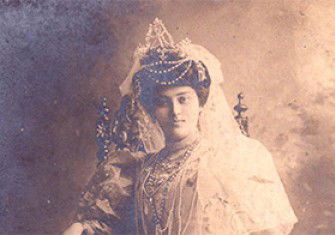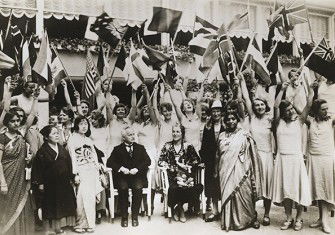Sanitising the Suffragettes
Why is it so easy to forget an unsavoury aspect of Britain’s recent past?

Historians have a unique opportunity in 2018 – the centenary of British women gaining the right to vote – to re-examine a pervasive silence at the heart of the story: that of the nationwide bombing and arson campaign carried out by the Pankhursts’ Women’s Social and Political Union (WSPU).
Previous attempts to examine this phenomenon have been met with criticism and personal attacks, as traditional idealists refused to allow an in-depth critique of the leadership of the suffragettes. But the evidence is clear. Between 1912 and 1915, hundreds of bombs were left on trains, in theatres, post offices, churches, even outside the Bank of England; while arson attacks on timber yards, railway stations and private houses inflicted an untold amount of damage. Yet the lives of the women who did this have been largely forgotten and erased from history, as a long-standing desire to sanitise the actions of suffragettes and portray them as perfect activists, or perfect martyrs, has altered our perception of even those whose names we know. While some historians have begun to acknowledge the violence and extremism of the WSPU, there remains a dominant belief that its violence amounted to little more than firecrackers in tins, or a few well aimed stones. This long-running historical myth has its roots among the suffragettes themselves.
While planning a potential memoir of Emily Wilding Davison in the early 1930s, Edith Mansell-Moullin wrote to Edith How-Martyn, one of the founders of the Suffragette Fellowship, asking for her advice on a difficult issue. Should she, ‘[as I do] … leave out the bombs?’ Similarly, Sylvia Pankhurst’s claim, made in her 1931 memoir, The Suffragette Movement: An Intimate Account of Persons and Ideals, that it was Emily Wilding Davison who bombed Lloyd George’s cottage, is rarely acknowledged. Laura E. Nym Mayhall, in her work on the militant suffrage movement, identified the importance of ‘a small group of former suffragettes’ in the 1920s and 1930s, who ‘created a highly stylised story’ of the WSPU and the history of suffrage in England, which emphasised ‘women’s martyrdom and passivity’. The group set about compiling the documents, memoirs and memorabilia that now form the basis of the Suffragette Fellowship Collection held by the Museum of London. Although this is a remarkable collection, Nym Mayhall points out that it has ‘come to serve as a basis for much of the current scholarship on the women’s suffrage movement’. The Fellowship decided what constituted appropriate suffrage history and which stories should be minimised or left out, creating a ‘master narrative of the militant suffrage movement’ and those it involved. At its most extreme, the Fellowship ‘lobbied to have incorrect passages excised from forthcoming memoirs or removed from subsequent editions of accounts already published’. As the suffragettes sanitised their own history, the real lives and experiences of the woman who had fought so hard and risked so much became the reason for their exclusion. The bombs were deemed inappropriate and those who carried out these violent actions have been hidden from view. Kitty Marion, a prolific bomber and arsonist for the suffragettes – and later an important part of the founding of Planned Parenthood, then the Birth Control League – has been consistently ignored. In her autobiography, written in the late 1930s, Marion left one of the most detailed accounts of the personal beliefs and actions of those who travelled across the country on the orders of the WPSU’s leadership to enact their self-proclaimed ‘Reign of Terror’. Her later role in the international campaign for birth control, operating between the US and the UK, offers one of the most interesting lives of an early feminist campaigner.
Yet, Susan Kingsley Kent leaves Marion out entirely from her detailed history, Sex and Suffrage in Britain, 1860-1914 (1990), neither recognising her as a member of the suffrage movement, nor as a birth control activist; nor does she feature in Hera Cook’s The Long Sexual Revolution: English Women, Sex and Contraception 1800-1975 (2004). Historian Brian Harrison fleetingly referred to Marion’s autobiography as ‘little more than an unreflective catalogue of [music hall] engagements’, passing over the rich complexity of her life that the autobiography encompasses. A recent biography of Emmeline Pankhurst recorded only a single mention of Marion: that she expressed ‘the view that there was ‘much dissatisfaction and withdrawal’ of WSPU membership after Pankhurst called for an end to militancy following the outbreak of the First World War.
What is so striking about Marion’s absence is that she went to such efforts to see her history conserved. Multiple copies of her autobiography survive. A copy is held by the New York Public Library, along with her original papers and notes, and two are held in the UK, in the archive of the Museum of London and in the holdings of the Women’s Library, now conserved by the London School of Economics. At least two copies of the autobiography have been on permanent public access since Marion wrote them and yet this remarkable woman has been neglected by historians. She has been reduced to a sentence or a mere name in a list for any work on suffrage or birth control in Britain, despite working and appearing continually in both campaigns. The same has happened to Mary Richardson, Lillian Lenton and all those violent suffragettes who published or attempted to publish their own autobiographies in the decades following the suffrage campaign. We need to re-examine their lives and their own accounts to gain a clearer understanding of the suffragettes in this centenary year. It might be uncomfortable, but it is entirely necessary.
Fern Riddell is the author of Death In Ten Minutes: Kitty Marion. Activist. Arsonist. Suffragette (Hodder & Stoughton, out this year).






